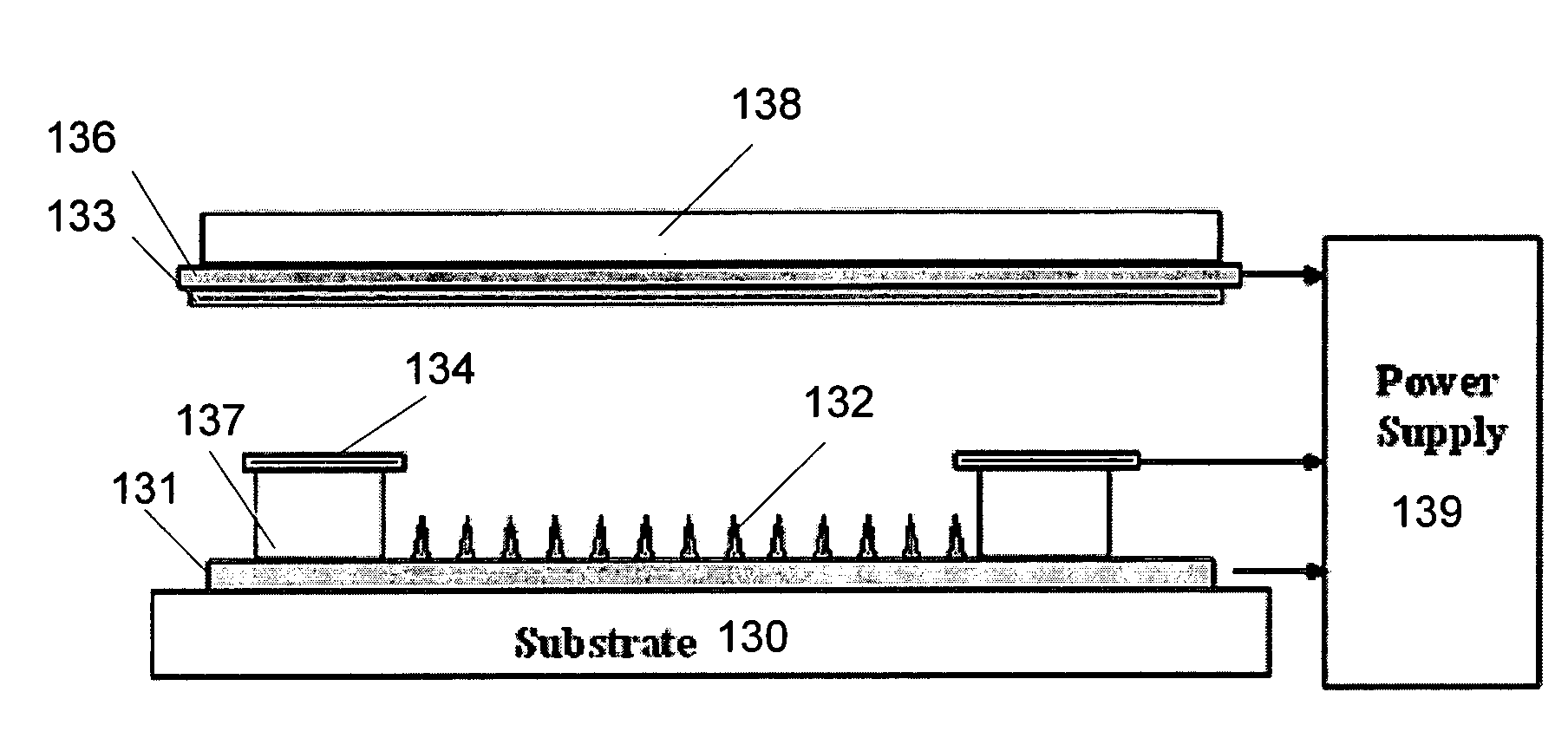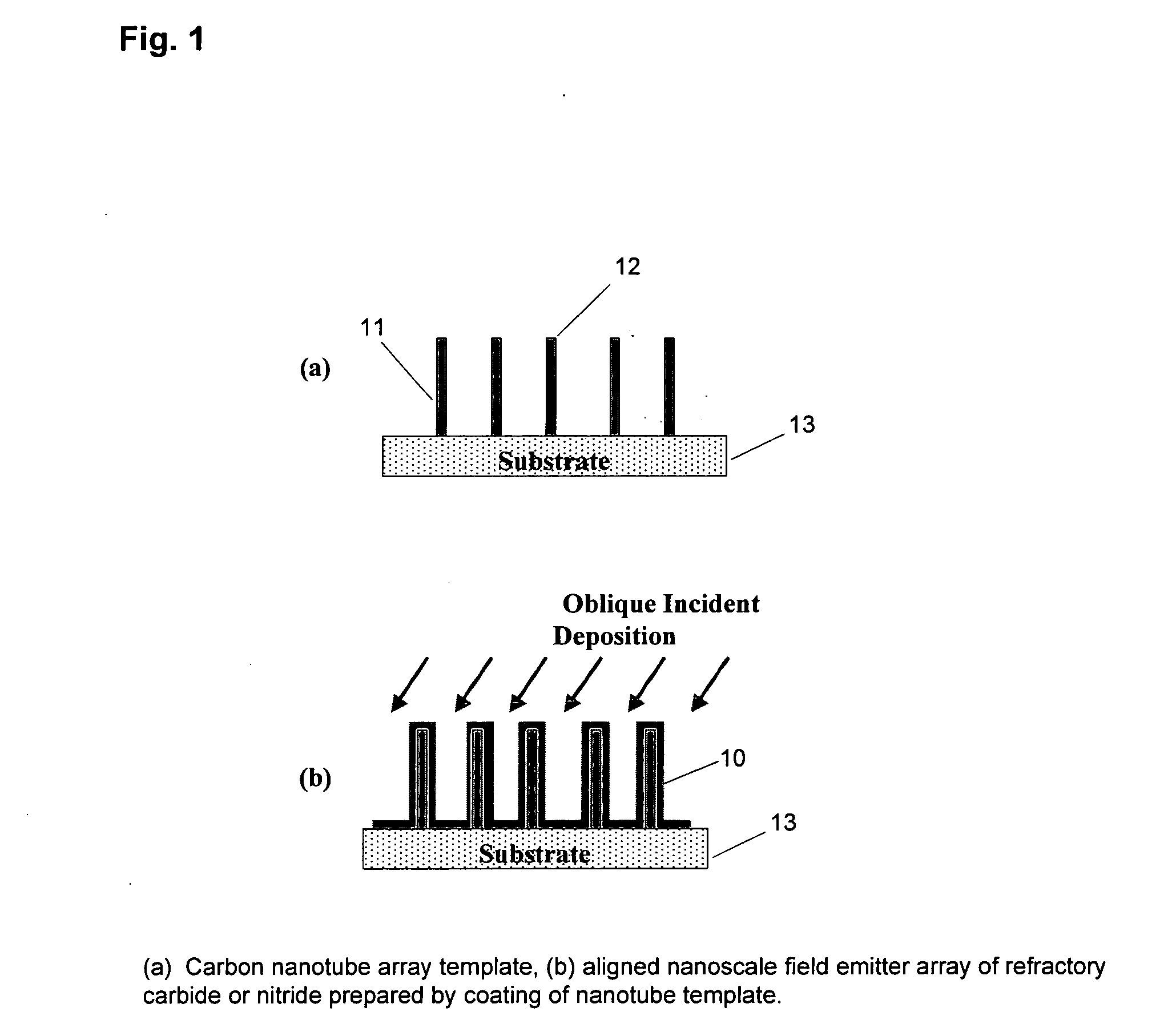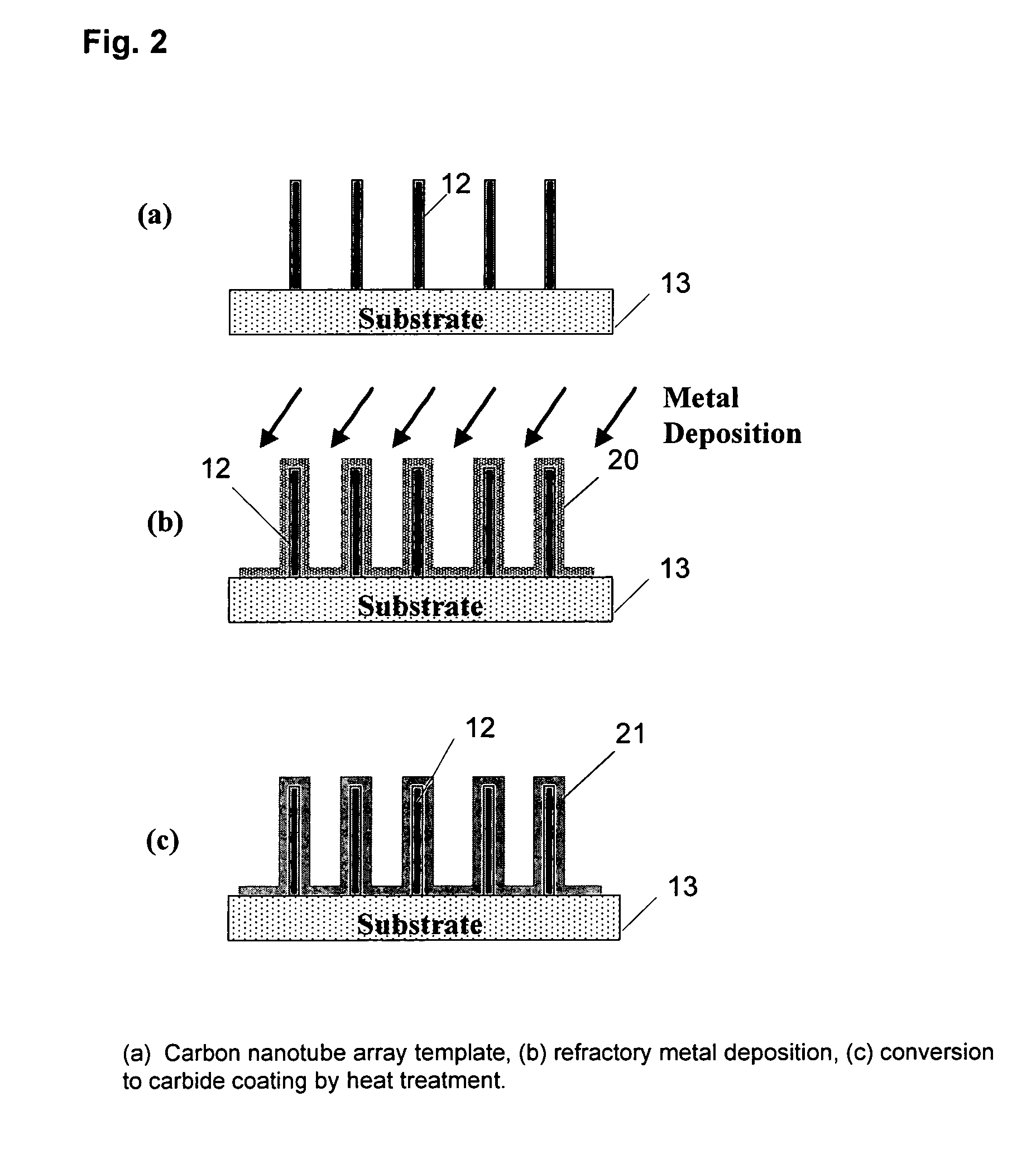Method of fabricating carbide and nitride NANO electron emitters
a technology of electron emitter and carbide, which is applied in the manufacture of photo-emissive cathodes, thermionic cathodes, electric discharge tubes, etc., can solve the problems of significant instability problems, deterioration and even destruction of emitters, and undesirable oxidation, so as to improve the emission characteristics and improve the stability of emitters
- Summary
- Abstract
- Description
- Claims
- Application Information
AI Technical Summary
Benefits of technology
Problems solved by technology
Method used
Image
Examples
Embodiment Construction
[0030]For efficient field emission of electrons, a high concentration of electric field is desired so as to allow operation of field emitter at relatively low and practical applied electric fields. Carbon nanotubes (CNT) are generally considered as one of the best electron field emitters is because of their high aspect-ratio geometry and resultant electric field concentration which allows significant electron emission at relatively low applied fields. However, field emission is both a function of the field concentration factor and the work function of the emitter. Carbon nanotubes are not exceptionally good in this respect, with a relatively large work function (φ˜5.0 eV). Carbides and nitrides, especially refractory carbides and nitrides provide even lower work functions than that for CNTs, for example, ˜3.8 eV for TaC and ˜3.3 eV for TiN. Having strong atomic bonding and high melting temperatures, these refractory metal carbides and nitrides are mechanically and thermally very sta...
PUM
 Login to View More
Login to View More Abstract
Description
Claims
Application Information
 Login to View More
Login to View More - R&D
- Intellectual Property
- Life Sciences
- Materials
- Tech Scout
- Unparalleled Data Quality
- Higher Quality Content
- 60% Fewer Hallucinations
Browse by: Latest US Patents, China's latest patents, Technical Efficacy Thesaurus, Application Domain, Technology Topic, Popular Technical Reports.
© 2025 PatSnap. All rights reserved.Legal|Privacy policy|Modern Slavery Act Transparency Statement|Sitemap|About US| Contact US: help@patsnap.com



